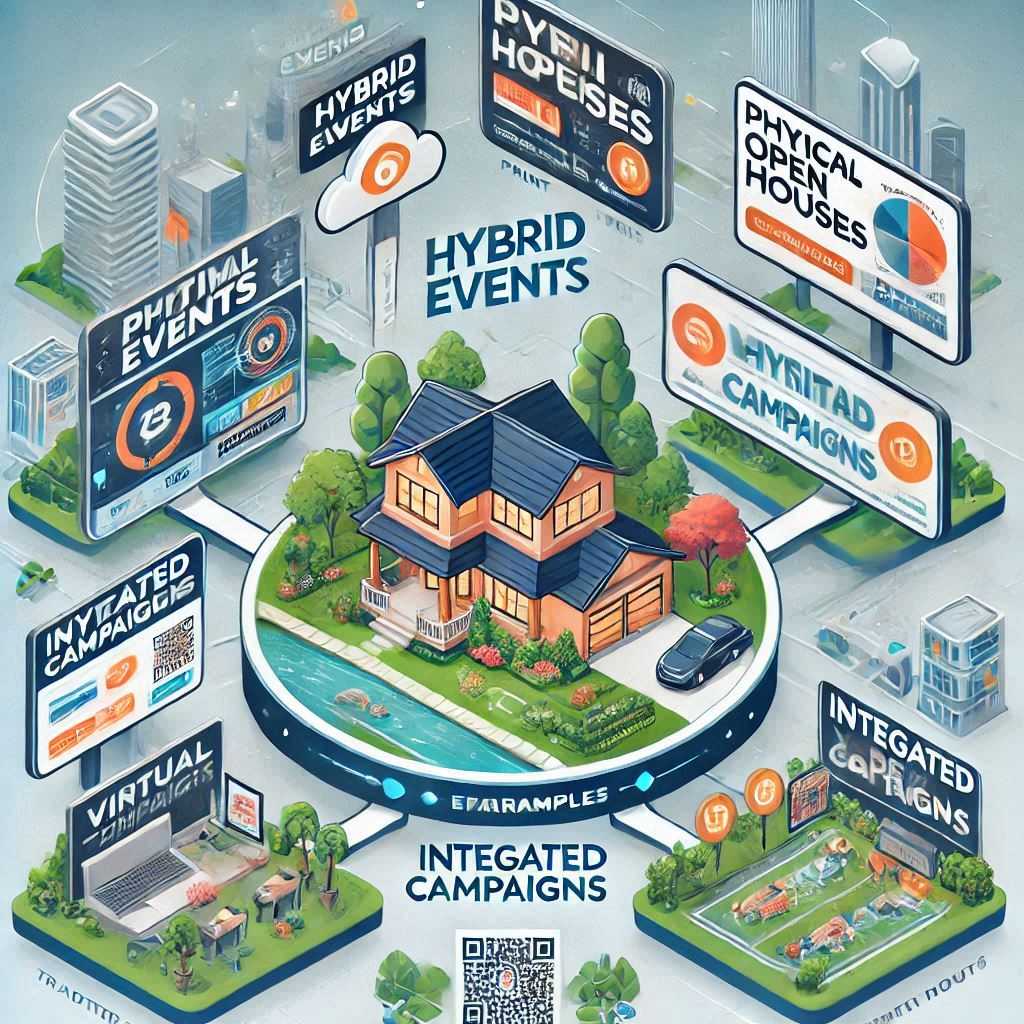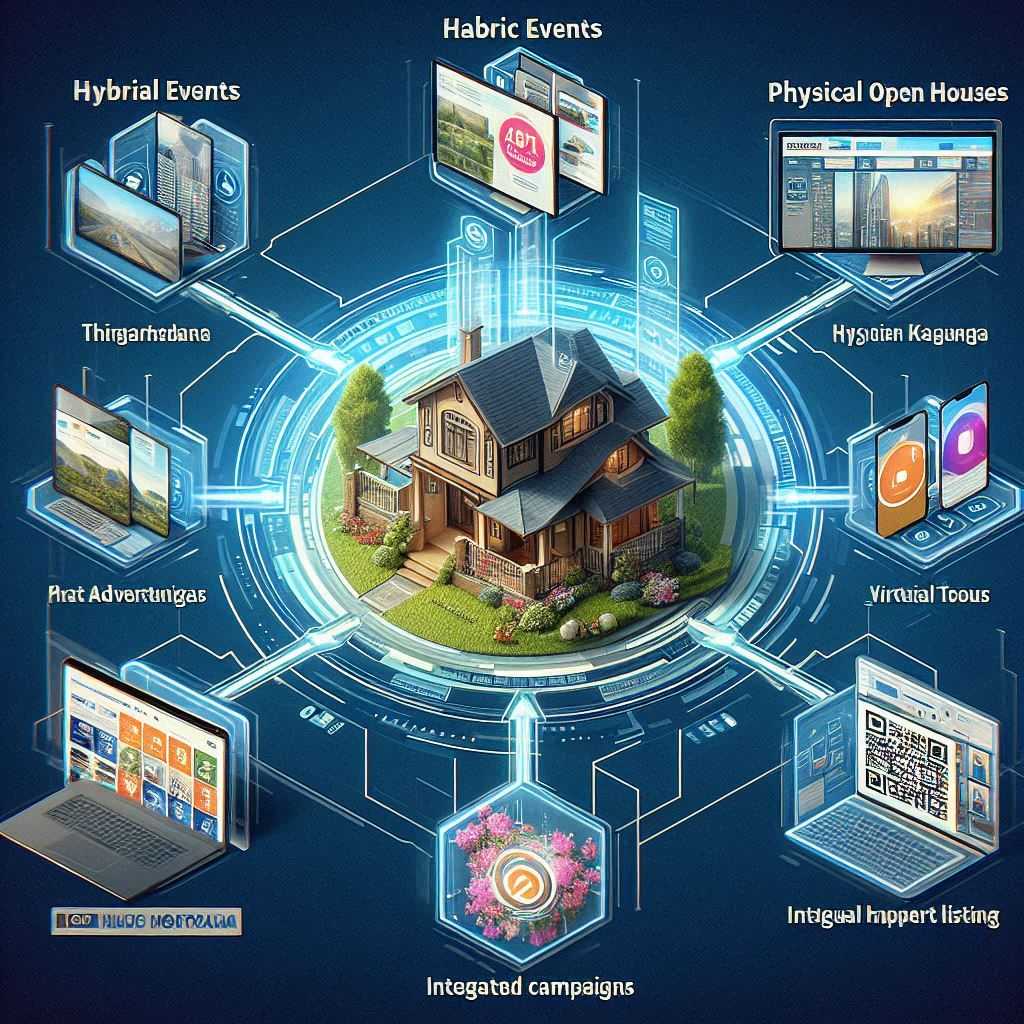Introduction
The real estate industry has witnessed a significant transformation in how properties are marketed and sold. The advent of digital marketing has brought unparalleled opportunities to engage potential buyers and streamline transactions. Yet, physical marketing strategies remain a cornerstone of the industry, offering tangible experiences that digital approaches cannot replicate. For real estate professionals, combining the strengths of digital and physical marketing is not just an option but a necessity to maximize property sales and enhance client engagement.

This article delves into the interplay between digital and physical marketing strategies in real estate, providing actionable insights for professionals to integrate these methods effectively. By exploring topics such as the role of digital marketing, the advantages of online listings, social media strategies, SEO for property websites, and the combination of virtual and physical property tours, we aim to provide a roadmap for success in today’s competitive market.
The Role of Digital Marketing in Real Estate and Its Impact on Traditional Methods

Digital marketing has revolutionized the real estate industry, offering tools and platforms to reach a global audience. Unlike traditional methods that often rely on face-to-face interactions and localized marketing, digital strategies provide scalability and precision.
Digital Marketing: Expanding Reach and Accessibility
- Global Audience Reach: Platforms like Google Ads, social media, and real estate portals allow professionals to showcase properties to international buyers, expanding beyond local markets.
- Data-Driven Insights: Digital tools enable the collection of buyer behavior data, helping tailor marketing campaigns to specific demographics.
Impact on Traditional Marketing
Traditional methods such as print advertisements, billboards, and physical open houses are not obsolete but are now enhanced by digital tools. For example:
- Hybrid Events: Physical open houses can be augmented with digital marketing campaigns to attract a wider audience.
- Integrated Campaigns: Print ads can include QR codes leading to virtual tours or detailed online property listings.
The Benefits of Online Property Listings Compared to Traditional Listings
Online property listings have become a dominant force in real estate marketing. Websites like Zillow, Realtor.com, and international portals provide an interactive and user-friendly experience for buyers and sellers alike.

Advantages of Online Listings
- 24/7 Accessibility: Unlike traditional listings in newspapers or brochures, online platforms are accessible at any time, allowing buyers to browse properties at their convenience.
- Multimedia Integration: Online listings can include high-quality images, videos, virtual tours, and even 3D floor plans, offering a more comprehensive view of the property.
- Search and Filter Capabilities: Buyers can easily search for properties based on specific criteria such as location, price range, and amenities, streamlining the decision-making process.
- Analytics and Insights: Sellers can track the performance of their listings through views, inquiries, and engagement metrics.
Traditional Listings: Strengths and Limitations
While traditional listings offer a tactile experience and cater to less tech-savvy audiences, they lack the interactivity and immediacy of digital platforms. The synergy comes from using traditional listings to direct audiences to robust online platforms for deeper engagement.
Real Estate Social Media Strategies to Enhance Brand Visibility and Attract Buyers
Social media is a powerful tool for real estate professionals to enhance visibility, build trust, and attract potential buyers. Platforms like Instagram, Facebook, LinkedIn, and TikTok offer unique opportunities for branding and lead generation.

Key Social Media Strategies
- Visual Storytelling: Share high-quality images and videos of properties, emphasizing their unique features and lifestyle benefits.
- Example: A real estate agent in Miami used drone footage on Instagram to showcase oceanfront properties, significantly boosting inquiries.
- Interactive Content: Conduct live QA sessions, polls, and virtual open houses to engage followers in real-time.
- Targeted Advertising: Leverage Facebook and Instagram ads to target specific demographics based on location, income, and interests.
- Showcasing Testimonials: Share success stories and client testimonials to build credibility.
- Community Involvement: Highlight local events, landmarks, and neighborhoods to position yourself as a local expert.
Case Study: The Power of Instagram Reels
A California-based realtor increased their followers by 200% by consistently posting Instagram Reels featuring quick property walkthroughs, market updates, and home-buying tips. This resulted in a measurable increase in leads and closed deals.
The Importance of SEO for Property Websites and How It Drives Organic Traffic
Search Engine Optimization (SEO) is a cornerstone of digital marketing for real estate. A well-optimized property website ensures high visibility in search engine results, attracting organic traffic without relying on paid advertising.
Why SEO Matters
- Higher Visibility: The top results on Google capture the majority of clicks. Ranking higher ensures your properties reach potential buyers first.
- Cost-Effective: Unlike paid ads, SEO provides long-term visibility without continuous investment.
- Builds Trust: High-ranking websites are often perceived as more credible by users.
SEO Best Practices for Real Estate Websites
- Keyword Optimization: Use relevant keywords such as "luxury homes in [city]" or "condos for sale near me" in your content.
- Content Marketing: Create blogs, videos, and guides that provide value, such as "Top 10 Home Staging Tips" or "What to Look for in a Neighborhood."
- Mobile Optimization: Ensure your website is mobile-friendly, as many buyers browse properties on smartphones.
- Local SEO: Optimize for local searches by claiming your Google My Business profile and using location-based keywords.
- Technical SEO: Improve site speed, ensure proper indexing, and use schema markup for property listings.
Example of SEO Success
A real estate firm in New York City optimized their website with local SEO strategies, including neighborhood-specific landing pages and blog content. This led to a 150% increase in organic traffic and a significant rise in buyer inquiries.
How Virtual Property Tours Can Complement Physical Open House Events
Virtual tours have emerged as a game-changer in real estate, allowing buyers to explore properties remotely. However, they work best when integrated with physical open houses.

Benefits of Virtual Property Tours
- Convenience: Buyers can view properties from anywhere, saving time and effort.
- Increased Reach: Virtual tours attract international buyers who cannot attend physical showings.
- Better Prequalification: Buyers can shortlist properties based on virtual tours, ensuring that physical visits are more meaningful.
Enhancing Open Houses with Virtual Tours
- Pre-Event Promotion: Share virtual tours on social media and through email campaigns to generate interest in upcoming open houses.
- Interactive Features: Use augmented reality (AR) tools to allow buyers to visualize how they might furnish or renovate the space.
- Follow-Up: Provide virtual tours to attendees after the open house as a reminder of the property’s key features.
Case Study: Combining Virtual and Physical Showings
A real estate agency in Texas integrated Matterport virtual tours into their marketing strategy. Prospective buyers could explore properties online before scheduling in-person visits. This approach led to a 25% increase in closed deals within six months.
Conclusion
The synergy between digital and physical marketing strategies is vital for real estate professionals aiming to maximize sales and client engagement. Digital marketing enhances reach, efficiency, and data-driven insights, while physical marketing builds trust and offers tangible experiences. By integrating online property listings, leveraging social media, optimizing for SEO, and combining virtual tours with open houses, real estate professionals can create a comprehensive strategy that caters to a diverse audience.
In today’s competitive landscape, those who effectively blend digital and physical approaches will not only stand out but also foster long-term success. Embrace the synergy, innovate, and watch your real estate business thrive.














